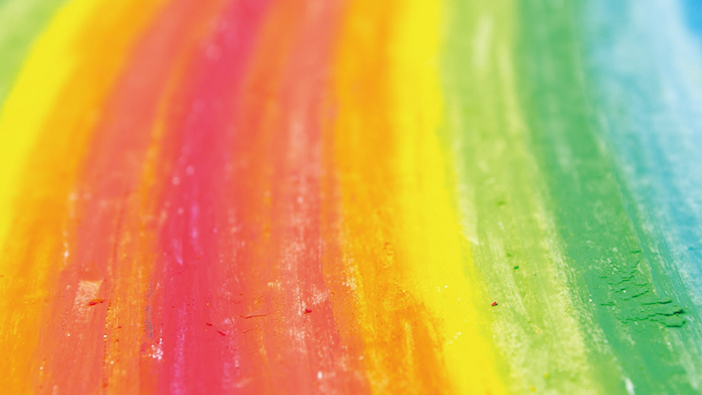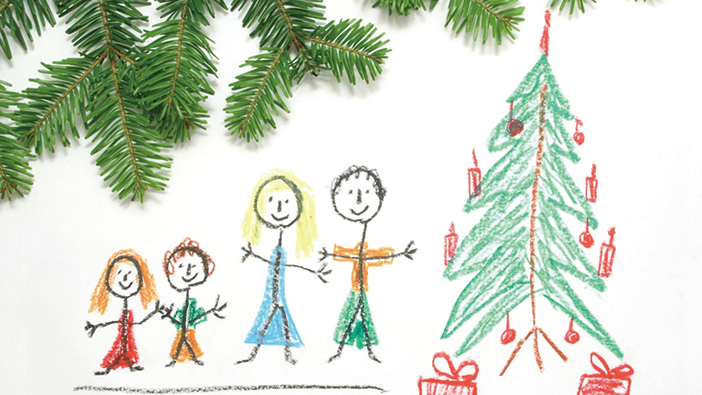Hello everyone and welcome to the start of the holiday season. Last year around this time we posted an article about combating “the gimmies” and it feels just as relevant now as it did then. So in the spirit of remembering the real reason for the holidays we are reposting.

Several years ago, one of my longtime parents, who I will call Susan, came back from winter break with her toddler. I asked how her holiday was and she replied, “It was the worst Christmas ever!” and then proceeded to tell me her story.
Susan’s kids had been vibrating with excitement for weeks. Nights spent writing wish lists, hours online to see the “real Santa,” and entire days lost in stores trying to find the toys they “had to have” all built up a sense of anticipation not just for the kids but the whole family. Simply put, they were excited to give their kids the best Christmas ever!
The big day finally came and a 20-minute free-for-all of flying boxes and squealing delight ensued. When the last of the tissue paper had settled, her eldest looked over the piles of new shiny toys and asked, “Is that it?”
Susan told me, “I have never felt like more of a failure as a parent! This ends now!” To her credit, the next year she had a battle plan to combat what she called “the gimmes.” I think it’s brilliant and hope it helps make your holidays richer and more meaningful.
Gifting not getting
Susan encouraged the kids to put more thought into making gifts for other members of the family — whether that was a family portrait in crayon from the 3-year-old or the now 8-year-old’s handmade friendship bracelets. Each child used their talents to make other people happy.
Every person has something they can do that is special. Something that they are, or should be, proud of. This is true of our kids too. By helping them identify their skills, and using them to make others feel good, you are telling your child that they matter, that their actions, words, and decisions have value. Let them get creative with their talents and watch what it will do for their self-esteem.
Gratitude every day
Every night at dinner, from Thanksgiving through the New Year, she asked each member of the family to share one thing that they were grateful for. She said it helped give them all perspective during a season in which they were bombarded with messages that they needed more “things” to be happy.
Gratitude is a step we so often skip with our kids because it feels complicated (entire self-help anthologies have been written on the subject) but it’s really acknowledging the little things that make us happy. Kids are naturally good at that. Gratitude reminds us we have enough and we are safe. We can give some of it away so others feel safe too. And that is important for the next step in Susan’s holiday rehab…

Make a difference
Susan asked each child to purchase a gift for a child they had never met, who otherwise would not have a holiday present. She neither picked nor paid for the gifts. Instead, the kids did chores around the house to earn the money for the gifts and chose a present to drop in the Toys for Tots donation box.

Make gift opening an event
Let’s be honest, you’re never going to convince your kids that presents don’t matter at all, and frankly, it’s really fun to give them the things they want! Susan and her husband decided to keep the tradition but make a few minor changes. Wish lists had to be three items or less.
And rather than everyone ripping into a million presents at the same time, the family took turns watching each other open gifts. This made each package special and since the kids had taken the time to contribute this year, they got a lot of joy watching their siblings and parents open the present they had made. This kind of practical mindfulness can enhance any experience!

Make thank you cards
It all came full circle back to gratitude. Before anyone got to play with a new toy, they had to make a heartfelt thank you card for the person who sent it. Susan laid out construction paper, crayons, and stickers to help the kids express their gratitude in a creative way.
Getting a gift is fun no matter your age and receiving a sincere thank you card always puts a smile on someone’s face. By taking the time to start and end the process with a thank you, we can add so much more meaning to everyone’s experience.

Keep the holiday spirit alive
This particular story revolves around the holiday season, but gratitude and service can be a year-round part of your family’s life. If your family loves the dinner time gratitude share, keep it! Did your child like volunteering at the animal shelter? See if they want to make it a monthly commitment. You might find that these little things add another layer of joy to your already joyful life and set really positive habits for your child.

It’s not about the money
There will be points in every person’s life when they can’t make a monetary donation, but that doesn’t mean they have nothing to offer their community. Help them identify other ways they can give back. Children are passionate, so start with the things they care deeply about.
• Do you have a little environmentalist? Help them organize a park clean up.
• Is your child concerned about world hunger or animal rights? Maybe a local soup kitchen or animal shelter could use some help on weekends.
• Do they love pets? Perhaps you can foster a puppy in need of adoption.
This goes back to teaching them that their actions matter. And people who believe they matter make different choices. They build healthier, stronger, and more just communities.
Susan and her family took back the holidays by making them about others. Our kids have so much to be grateful for and spreading the love only helps make their life richer and fuller! So, whether you celebrate Christmas, Hanukah, Kwanzaa, Winter Solstice, or just the literal transition from shorter colder days to longer warmer ones, Happy Holidays. May your hearts be warm and may we all move towards the light together!
KEEP READING: Beijing Gratitude List
Images: Canva




